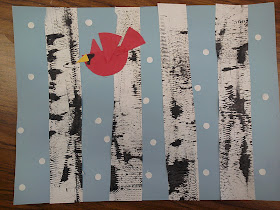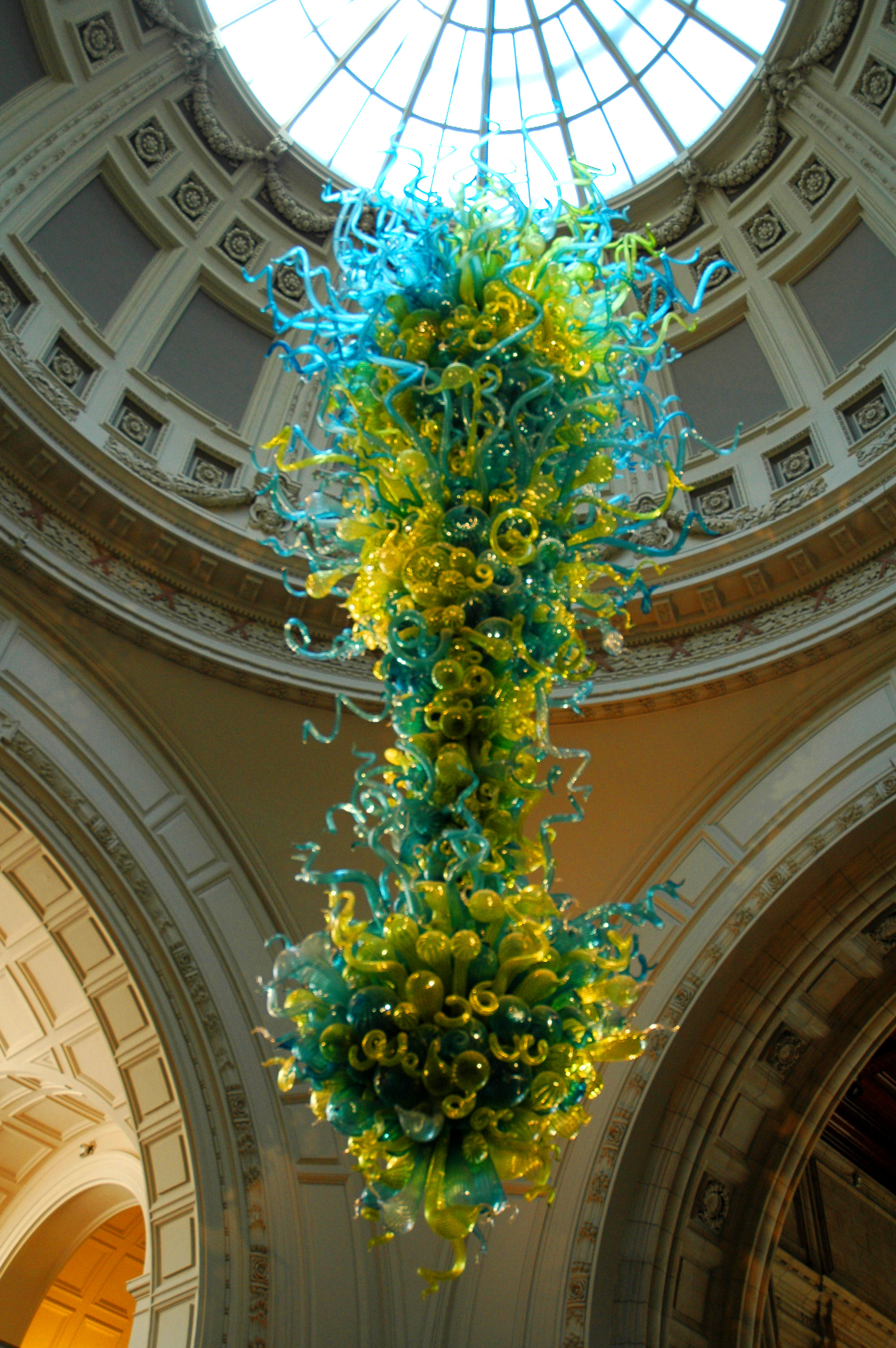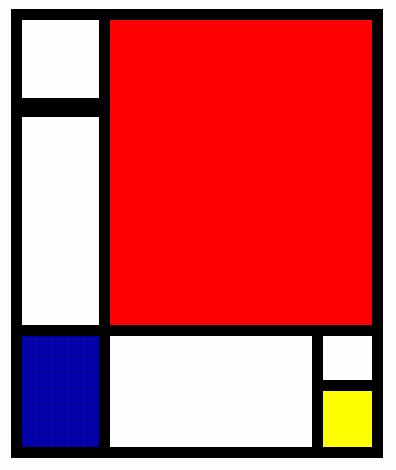1st graders made a winter scene with textured paint to form birch trees along with a cardinal in flight as it snows! I know it's early but the sooner it's done, the longer the students can enjoy it during the season! Before we started, we put our names on the back of the light blue paper. For the trees I instructed the students to create textured paint on their white piece of paper by taking a very small amount of black paint and combing it out (focusing on hardly getting any black paint on the paper so that most of the paper remains white and if there's any globs, keep spreading and combing till dry) across the paper.
While it dries (should dry fast if they followed the direction of hardly having any black paint and combing it out really well!), trace a circle on a red square of paper. Cut out the circle and pretend it's a pizza. Cut the pizza in half. The bottom half, put to the side. That will be the body. The other half, cut into 3 slices: 1 for the mohawk (the tuft of feathers on the head of a cardinal), 1 for the wing, and 1 for the tail. Then add black crayon for the 'mask' on the face of the cardinal. Glue 'slices' in place on the cardinal. Find a yellow scrap to cut a tiny triangle out for the beak. Glue in place. Snip off if necessary.
Check on the painted paper. Should be dry! I showed students how you could really cut the paper for the trunks 2 different ways. I said I like to do the nice tall way so then it fits the paper better and I can 'give it a hair cut' (snipping off the ends after glued). Glue trunks in place. Throw scraps away.
 |
| students hard at work! |
Paper punch white scraps and glue on for a light snowfall in a birch forest. 1st graders did an amazing job!





















































